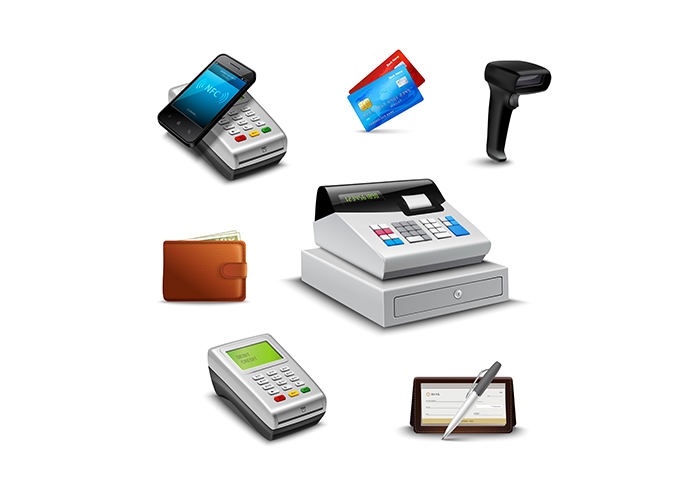
A Point of Sale (POS) system typically includes a combination of hardware components designed to facilitate transactions and streamline business operations.
The specific hardware components may vary depending on the type of business and the complexity of the POS system, but here are common elements found in many POS setups:
Point of Sale Terminal:
This is the central device where transactions are initiated and completed. It often includes a touchscreen interface for inputting items, processing payments, and generating receipts.
Barcode Scanner:
Used to scan the barcodes on products, providing quick and accurate identification of items for pricing and inventory management.
Receipt Printer:
Prints receipts for customers as a record of their transactions. There are various types, including thermal printers and dot matrix printers.
Cash Drawer:
A secure compartment that holds cash collected during transactions. It is usually connected to the POS terminal and can be opened automatically after a sale is completed.
Credit Card Reader/Debit Card Reader:
Enables electronic payment processing by reading information from credit or debit cards. Modern systems may support chip cards, magnetic stripe cards, and contactless payments.
Customer Display:
A secondary display facing the customer, showing details of the transaction, itemized prices, or promotional information.
Keyboards and Mice:
Although many POS systems use touchscreen interfaces, some setups may include traditional keyboards and mice for additional input options.
Cash Register:
In some cases, a traditional cash register may be part of the POS system, especially in smaller businesses.
Scale (for Weighed Items):
Businesses that sell items by weight, such as grocery stores or delis, may use integrated scales to weigh products and calculate prices.
Kitchen Printers (for Restaurants):
In restaurant POS systems, kitchen printers are used to send order details directly to the kitchen for preparation.
Mobile Devices/Tablets:
Some POS systems leverage tablets or mobile devices as terminals, providing flexibility for businesses with mobile service points or multiple locations.
Router and Network Equipment:
For POS systems that rely on network connectivity, routers and network equipment ensure a stable and secure connection.
It’s important to note that the specific hardware components a business needs depend on its industry, size, and specific requirements. Additionally, advancements in technology have led to more compact and integrated POS solutions, with some systems combining multiple functions into a single device.


Leave a Reply